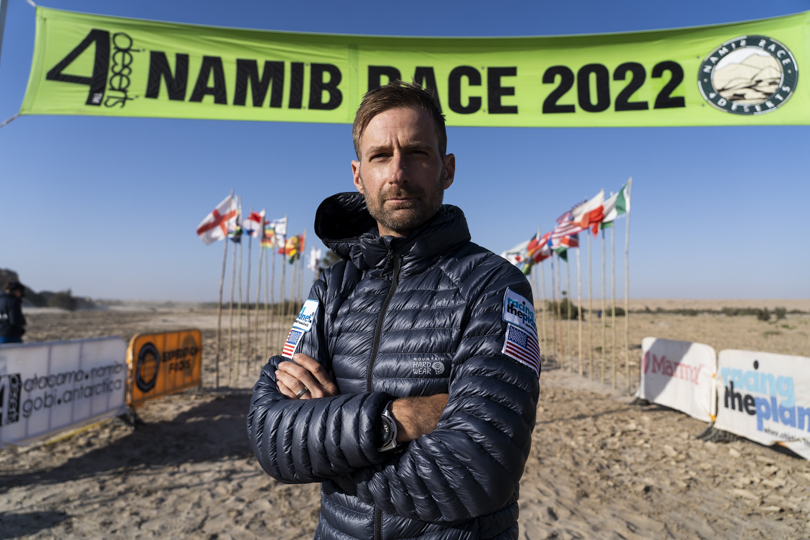1K4D: Field Notes on Running in the World’s Oldest Desert
On May 7, 2022, I finished the Namib Race—the first race in the Racing the Planet 4 Deserts Ultramarathon Series—in 4th place. It’s taken me a couple weeks to think back on the race and about what I would like to say about those 155 miles. I’ve decided on a lightly edited version of what I wrote in my daily dispatches while I was in the thick of it.
A few hours after I finished each stage, I would stagger across camp to a small table with a computer on top. I’d punch out a few paragraphs about how that day went, narrowly avoiding slumping down onto the keyboard, then crawl into my sleeping bag. What follows are those entries.
Stage 1: May 1, 2022
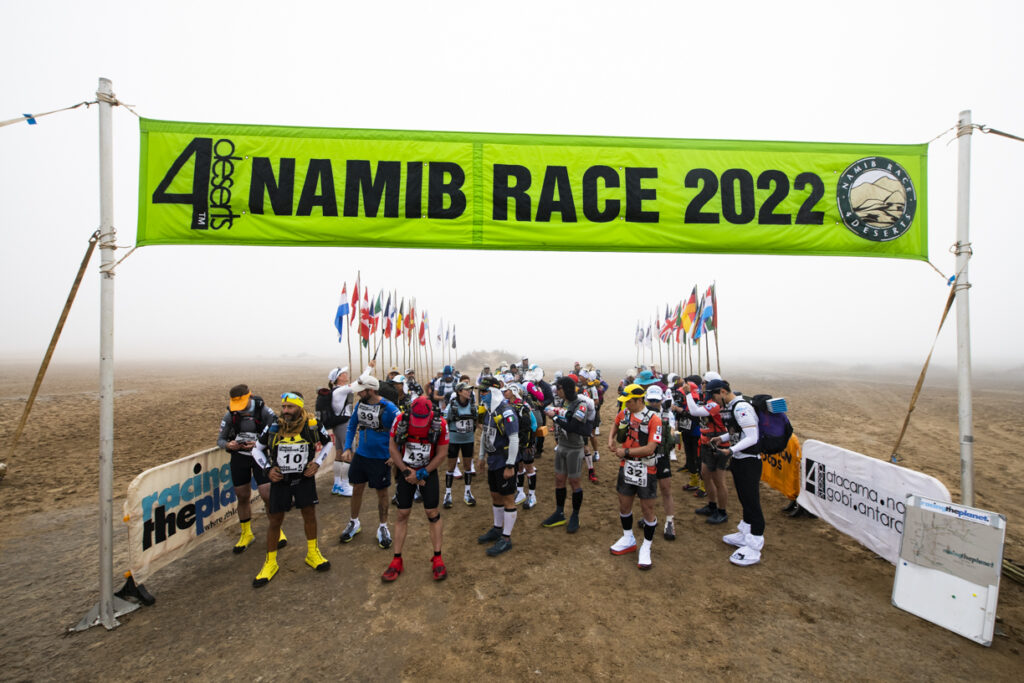
I really wanted to type three words to start this stage report: “That was easy.”
I can’t type those words.
My travel to Namibia was a disaster, with two cancelled international flights then two consecutive overnight flights (Denver to Frankfurt, Germany; then Frankfurt to Windhoek, Namibia). I’m still having trouble adjusting to the time, I just can’t fall asleep at night (which is like going to bed at 12 noon and waking up at 9 p.m.)—but I feel fortunate to have made it here on time for the race. And after a full Saturday in camp due to Covid precautions, we started this morning at 8:30 a.m.
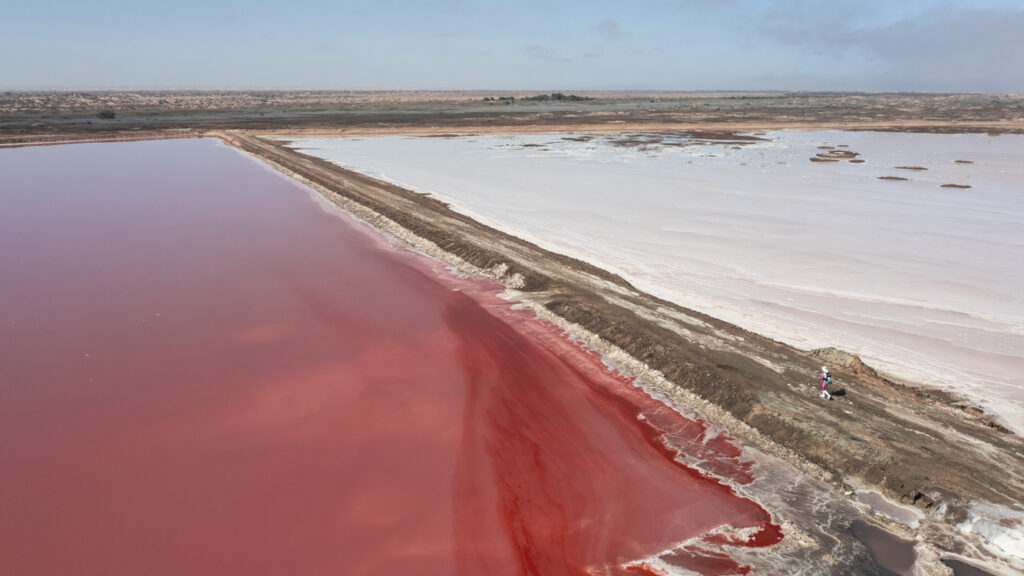
It was mercifully overcast at the start. We ran for about 8 miles through Sub-Saharan Africa’s largest salt pans, which took on a pink glow from the Atlantic fog (augmented by the flocks of flamingos that frequent the area).
The leaders went out fast—8 minutes a mile—which is a hard pace to maintain with a pack on your back. I stayed back at 9 minutes a mile and started passing guys at about mile 8, overtaking someone every few miles.
At the halfway mark, the sun came out. It was brutal. I’ve never felt sun like that—it was like being an ant under a magnifying glass. That’s also when we hit some sand dunes, which are said to be the largest in the world.
I was really strong through mile 23, then I started to fade. My pace dropped from 11 minutes/mile to 12, then 13. It didn’t help that the course was supposed to go 24 miles but actually went 25.5 miles. I bled out those last few miles and slumped across the finish line in 4th place.
I spent the next hour with the medical staff cooling off. My hands went tingly and my leg muscles were twitching. I’d had plenty of water and sodium and wasn’t ever in any danger, but it did not feel like a good end to the day.
The guys that came in ahead of me are all experienced at these type of races and their bags are much, much lighter. Mine came in at over 26 pounds (without water, which adds another 2-3 pounds), while the leaders had bags that were 13-15 pounds. I have a lot to learn for the next one…for now I’ll be pitching whatever I can and eating down the food in my bag so it’s not so heavy.
Stage 2: May 2, 2022
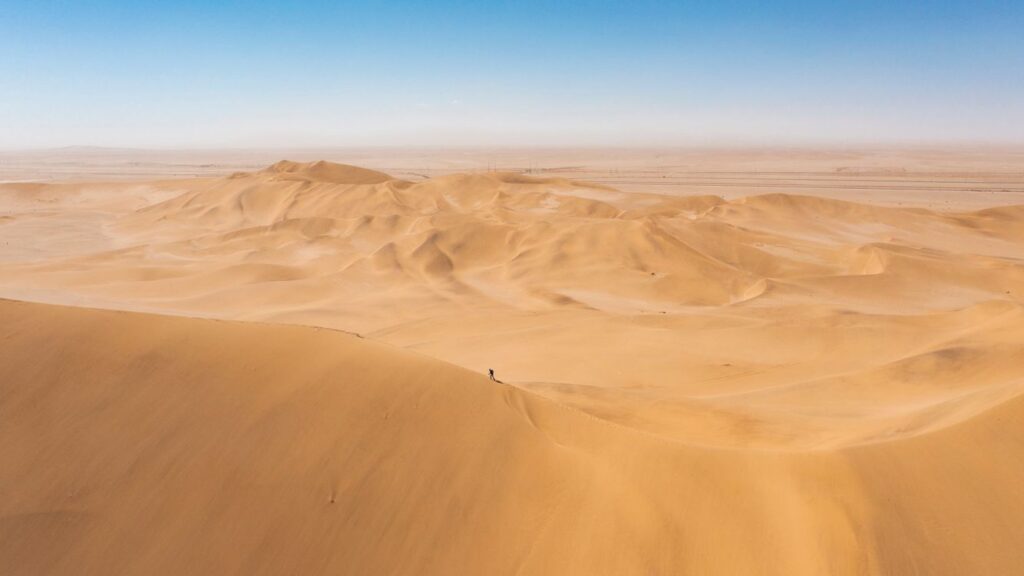
Stage 2 wasn’t easy, but it was easier. I finished 4th by quite a margin on a much hotter, even longer stage than yesterday. The downside is it took 5 hours and I needed work on some ugly toes, so my recovery time was shorter.
I still can’t sleep. I was all set in my sleeping bag by 7 p.m. but could not fall asleep for hours. Honestly I can’t say when (or if) I fell asleep, but at least I was resting and horizontal for 10+ hours.
Stage 2 is “dune” day, which sounds like a great idea for a day trip and is in fact what people visit here for. But climbing dunes is brutal. Life trains you to trust your feet to stay put when you put them on the ground. Dunes throw all that off. You climb and climb for mere inches of forward progress, or take two steps forward and slide a few feet back. And running down a dune—today we ran down one that was several stories high—is thrilling for a moment, until you feel the hot sand kick up your backside and find its way into every crevice of your shoes.
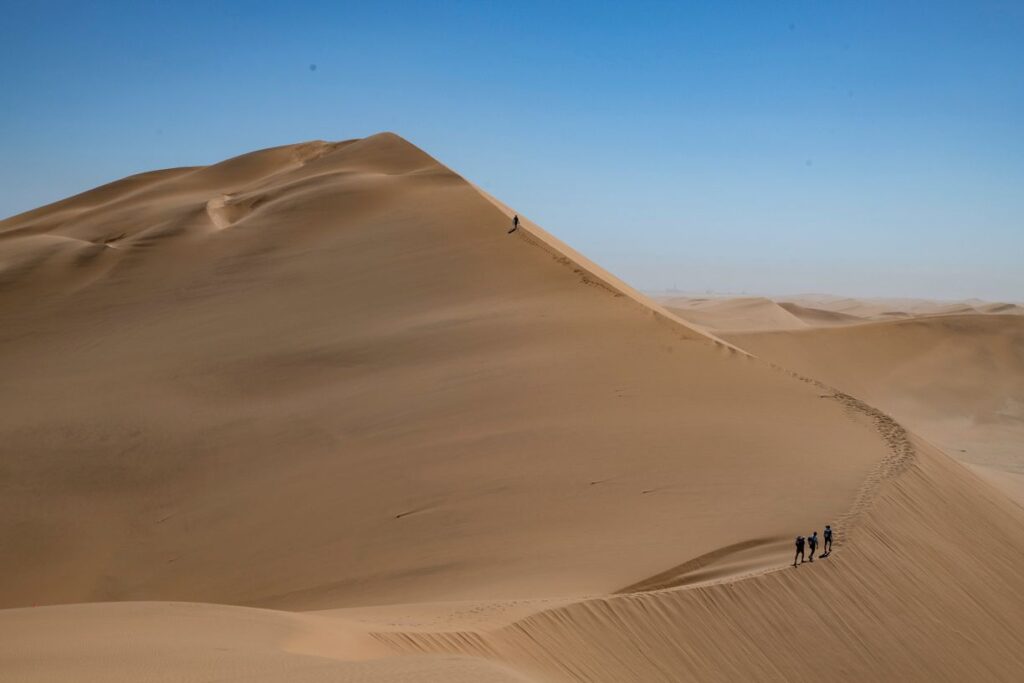
I started the day slow and easy because I knew today would be hotter and longer. I drank more water and took my time in the aid stations to make sure I got down everything I had planned to consume.
It also helped to shed every ounce possible. Everywhere you look in the desert, there are bones and dead things—an ever-present reminder that this place means death for the unprepared. So I threw out a pair of socks, a shirt, my favorite visor, got rid of every unnecessary dry-toothpaste tablet, squeezed out half of my lip balm, threw away most of my wet wipes, and even cut some of the straps off my pack.
I also wore my full hat with neck cover, purpose-built for the desert. Yesterday my pack pulled my shirt down just a tiny bit and the spot where my neck meets my back got burned badly. I had put what I thought was plenty of sunscreen on, but like the sand, the sun gets everywhere and burns everything.
A very strong wind kicked up for the last 2 miles into camp, so the sand clung to my wettened bottle caps, filling every sip with a special crunch.
I’m exhausted, and I know there’s a long way to go. But I have a plan and feel confident it’ll work.
Stage 3: May 3, 2022
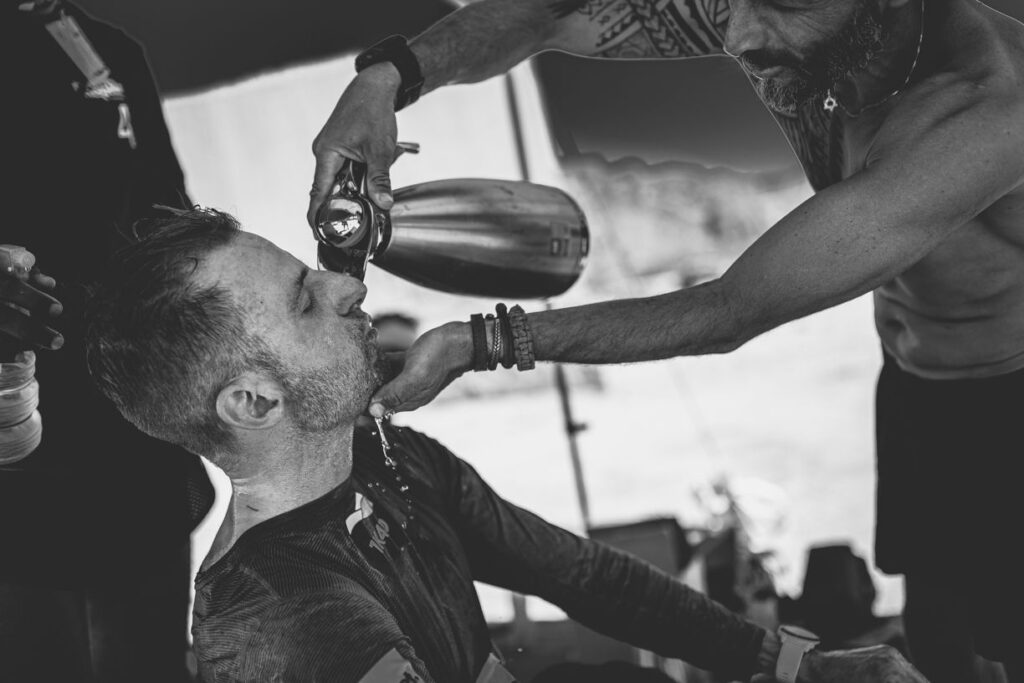
It got to 55 degrees Celsius today in the sun, which someone calculated to 131 degrees Fahrenheit. After I got to the finish line in 4th, I spent the next 20 minutes having water poured on my face and back to get my body temperature down to normal.
They had to call the race after the first 11 or 12 runners came into the finish, stopping the remaining racers at a checkpoint and driving them to the finish.
Honestly, just today seems like validation in the sense that on the worst weather day I’ve ever run in, my single kidney did its job. It didn’t hold me back.
I’ve never been so tired and drained in my life. The good news is I’m doing well against the others doing the Grand Slam—so if I can hang on I might have a shot at winning the Grand Slam.
Stage 4: May 4, 2022
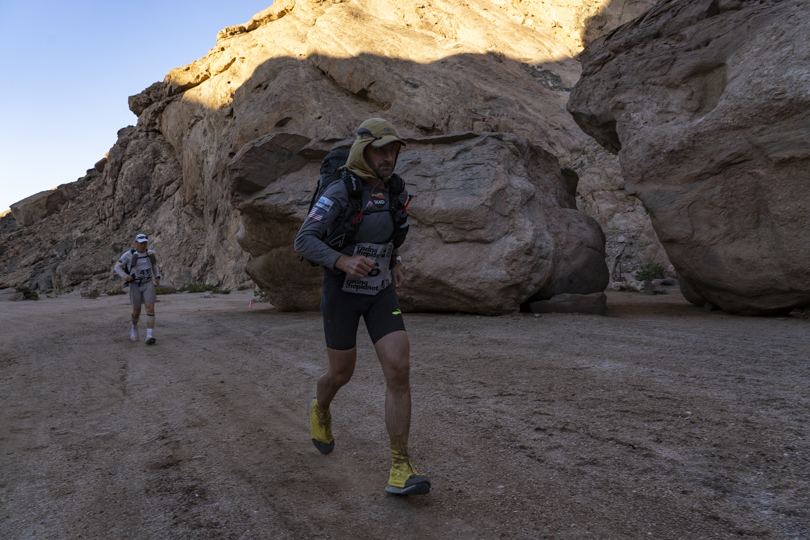
Last night might’ve been the low point of this race for me. I was having trouble eating and drinking and resting. It was just so hot. So I aimed for two out of three. Since I couldn’t sleep, I nibbled at food and took salt caps and drank as much as I could take. When we started this morning at 7 a.m., I didn’t feel good, but I felt upright and as ready as I could be for the day.
We learned just at the start that another American in the race pulled out before this morning because, basically, he couldn’t pee. His kidneys weren’t working properly, which is a kill-shot out here. Again, a sign that running this thing with one kidney might change some minds about kidney donation.
I’ve learned weather forecasting in the desert is far from exact science. Where we are right now—the Moon Valley—is Namibia’s version of the South Dakota’s Badlands, so the temperature varies considerably depending on what side of the rocks you’re on. When the wind is blowing from the East, it feels like opening the oven and pushing your face inside. If the wind’s from the West, you get a nice cool breeze.
Today we had a blend of both, so it was a hair dryer to the face alternating with a pleasant cool-off. I took it as easy as I could and finished 4th again. The race did impose a mandatory stop period from 11:30-2:30 p.m., but I was ahead of the checkpoint where they held runners up so I kept on to the finish in the midday heat.
When I got to the finish, I sat with a group of the faster runners and talked about how they prepared. One of the leaders, Reinhard Hugo from Switzerland, is quite an athlete and has experience in these events. He was kind enough to show me around his pack—how he’s prepared and his choices for the packing list to cut as much weight as possible.
For the race’s mandatory multi-tool, he’s taken apart the smallest Swiss Army knife you’ve ever seen and stripped out everything but the blade. He doesn’t use a stuff sack for his sleeping bag. The packing list says 3 pairs of socks, so he has a regular pair of running socks and 2 pairs of the super-thin socks that women wear under high heels. You can see how a hundred decisions add up, gram by gram. Tomorrow he’ll be carrying about 7-8 pounds and I’ll be lugging 15-16.
Seeing how others do this has been incredibly helpful. I’ll have to go back to the drawing board before the next one.
Stage 5: May 5, 2022
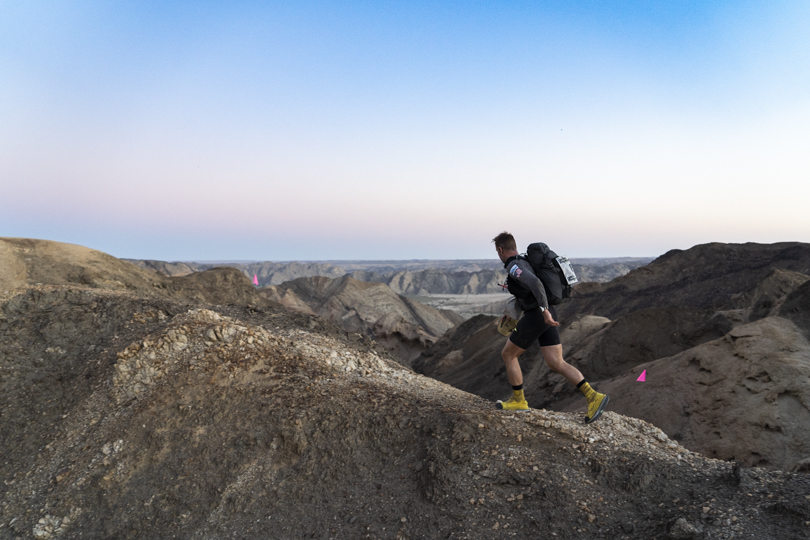
It’s almost over now. After running all day yesterday, for about 10 hours, just under 50 miles (including 2 extra for a wrong turn), I finished The Long March stage.
The race organizers decided to build in a mandatory stop in for another day of extreme heat. So when I came into Checkpoint 3 at about 12:40 p.m., they stopped me until 3:40 p.m. That helped immensely and I was able to run in the later part of the afternoon—for once without the sun burning me every step.
There’s good news about place—I’ll finish in 4th overall. Because I was one of the earlier finishers, I have a rest day on May 6. May 7 is Stage 6, a jog to the finish with the entire group, sort of a “victory lap” of about 6 miles or so. Afterwards we get to eat real food again!
Thoughts from After the Race
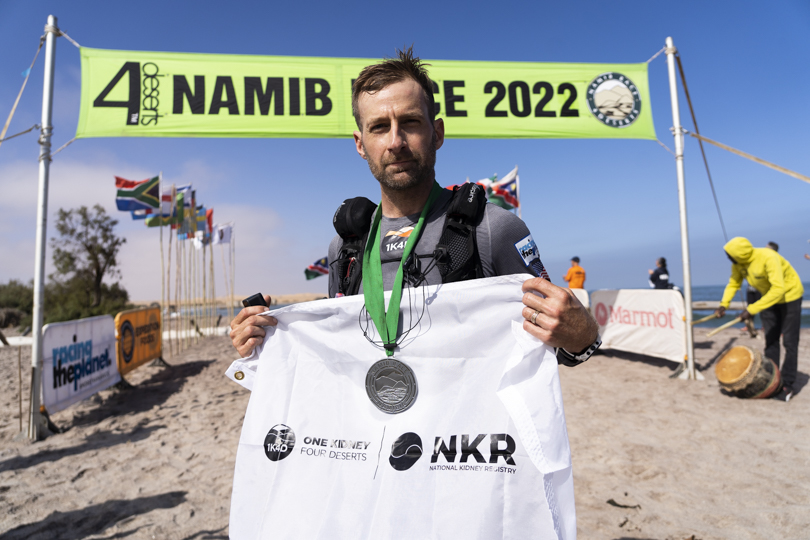
Whoever coined the expression, “hurt people hurt people,” never spent time at the Namib Race.
I saw plenty of hurt during the race. One runner lost all 10 toenails. One had an Achilles swell to twice its normal size. Limited calories meant everyone starved a little. My back was so torn up by my pack that after the race it looked like it had been whipped then beaten with a bat. By the end, camp looked like an army aid station, with a bunch of walking wounded staggering around.
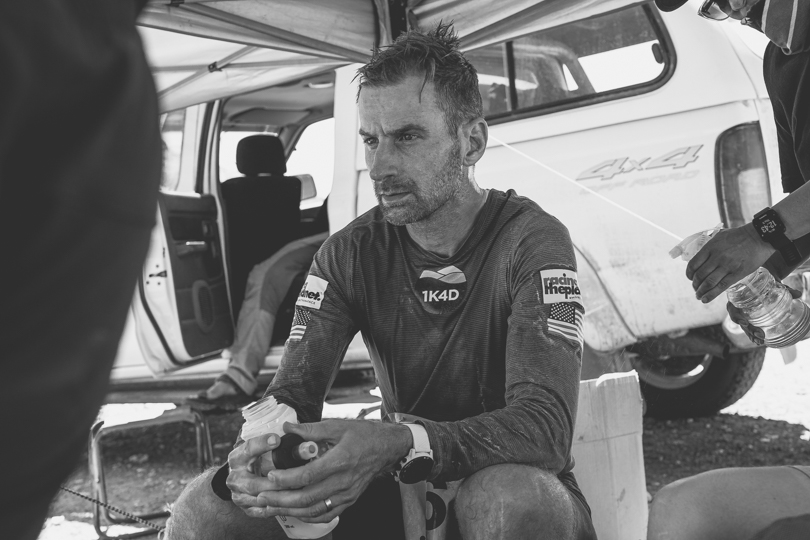
But even after a week of heat and hunger, these hurt people didn’t hurt people. These hurt people helped others. No matter how exhausted, I saw runners get up, cheer on, and welcome later-finishers with water and stools to rest on. No matter how hungry, I saw runners share the food they’d been carrying on their own backs with even-hungrier comrades. No matter how pained, I saw grins and happy-to-see-yas.
That’s my lesson from the Namib. When I get hit, I tend to turn inwards, not talk, and develop a thousand-yard stare that you can even see in the race photos. That may not hurt anyone, but it doesn’t help anybody either.
And maybe that’s the bigger point. Instead of paying pain forward, this is how you help turn others from hurt to happy.
For that, I owe my biggest thanks to everyone in the Namib last week for showing me how to suffer better. I won’t forget your kindness, not only because it helped me finish the hardest run I’ve ever done, but also because I think you helped me see a way to being a better person.
Thank you all.
